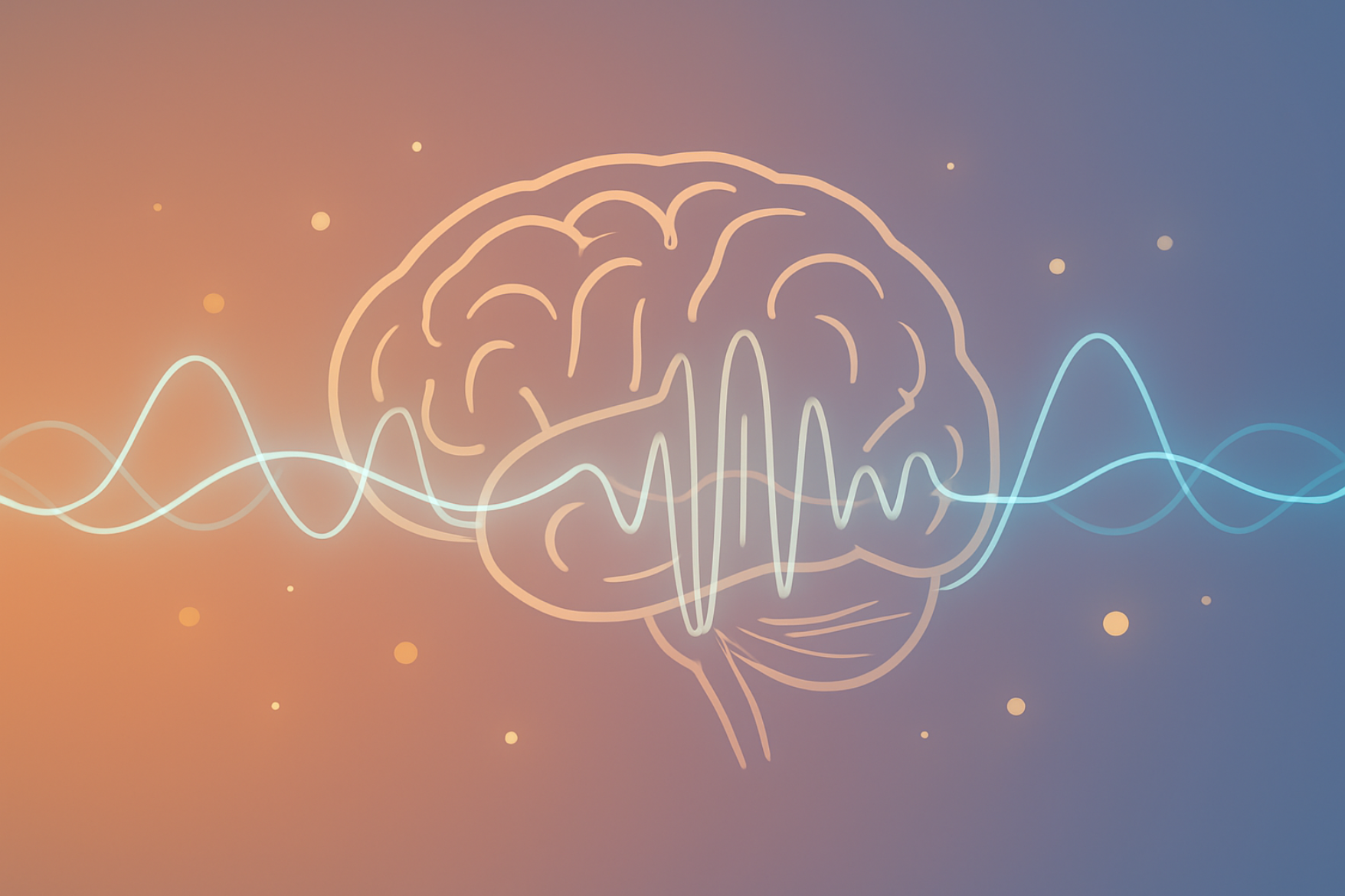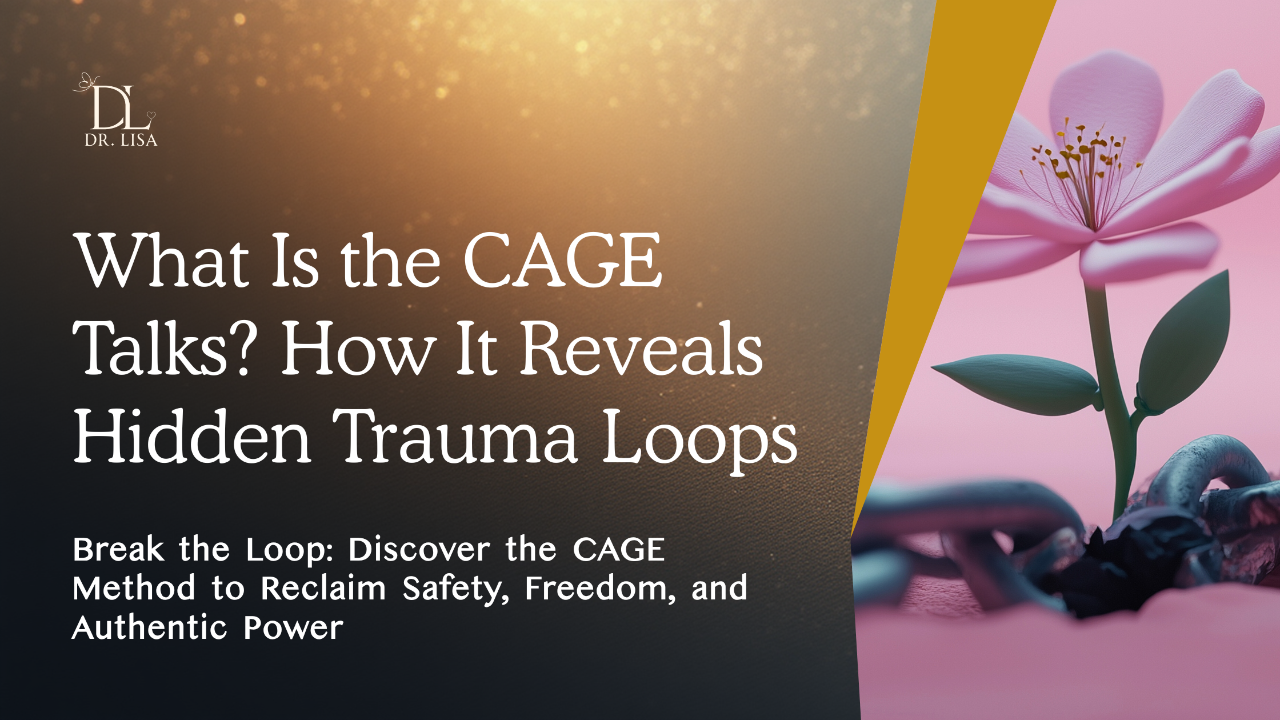
When Family Triggers Old Wounds: Using EMDR and CAGE to Stay Present
Nov 24, 2025The holidays have a way of bringing everything to the surface — joy, nostalgia, and, for many, the ache of old family dynamics. No matter how much healing work you’ve done, stepping back into the environments where your patterns were born can activate the very parts of you you’ve worked hardest to outgrow.
Maybe you find yourself shrinking in conversations with a parent, overexplaining when someone misunderstands you, or feeling that familiar tension in your chest when conflict brews.

That’s not regression. It’s recognition — your nervous system remembering what it once had to do to stay safe.
The work now isn’t to avoid those feelings. It’s to stay present inside them. This is where EMDR and the CAGE Talks become invaluable companions. Together, they help you interrupt the automatic pull of old trauma loops so you can choose presence over protection.
Why Family Is the Ultimate Trigger
Our deepest survival patterns were shaped in our earliest relationships. Long before we could articulate boundaries or needs, our bodies learned how to adapt to get love or avoid loss. Those patterns live in implicit memory — the body’s unconscious record of how to stay safe.
So even as an adult, a simple tone of voice, a question, or a look can trigger physiological responses from decades ago.
Your brain might know, “I’m not that child anymore.”
But your body says, “It’s happening again.”
This is why even the most self-aware women can feel themselves regress at family gatherings. It’s not weakness. It’s wiring. And that’s exactly what EMDR and CAGE are designed to rewire.
How EMDR Helps You Stay Regulated Around Family
EMDR (Eye Movement Desensitization and Reprocessing) helps the nervous system separate past from present. By using bilateral stimulation — guided eye movements, tapping, or alternating sounds — EMDR reactivates the brain’s natural processing system so that old memories can complete.
When practiced consistently, EMDR helps you:
- Recognize that an emotional reaction is past-based, not present danger.
- Calm the physiological stress response faster.
- Maintain access to your adult self even when old feelings arise.

In the context of family, this is powerful. Instead of reacting from a 10-year-old’s fear or shame, your system learns to stay anchored in the present adult awareness: “I’m safe now. I have choice.”
That’s the difference between reliving and remembering.
Integrating the CAGE Method: From Reaction to Response
The CAGE Method® adds another layer of real-time awareness. While EMDR works through memory reprocessing, CAGE gives you a moment-by-moment map for staying conscious when triggers appear.
Here’s how to apply it at your next family gathering or difficult conversation.
1. Confront the Cage
The “cage” is the contraction — the moment you notice your body tighten, your tone change, or your energy withdraw. Pause and name it internally:
“Something just activated. I’m in the cage.”
This statement interrupts the automatic loop of defense. Naming the contraction returns agency to you.
2. Acknowledge and Allow
Once you recognize the pattern, take a breath. Feel where the trigger lives in your body — maybe heat in your face, a knot in your stomach, or tension in your jaw. Don’t fight it. Just notice.
You might quietly remind yourself:
“This feeling is old. I can feel it now because I’m safe enough to.”
Allowing the sensation communicates safety to the nervous system.
3. Generate New Energy
As the charge softens, intentionally create a new energetic pattern. This might look like:
- Dropping your shoulders and breathing deeper.
- Silently repeating, “I’m safe to stay open.”
- Visualizing a calm, grounded light moving through your body.
These micro-movements retrain the system to respond rather than react. Over time, your body learns that openness is no longer dangerous.
4. Embrace Your Expansion
Once you’ve regulated, you get to choose differently. Maybe that means excusing yourself for a walk instead of arguing. Maybe it’s staying present and compassionate in a conversation that once sent you spiraling.
Expansion doesn’t always mean confrontation. It means congruence — aligning your response with who you’ve become, not who you were.
This is where healing translates into behavior.

Why Triggers Are Invitations, Not Failures
Every time you get triggered, you’re revisiting a place in your body that still believes danger equals love or silence equals safety. That’s not something to shame — it’s something to meet with curiosity.
EMDR and CAGE together create a feedback loop of healing:
- EMDR processes the memory so the charge dissolves.
- CAGE helps you apply that integration in the moment.
The more you practice both, the shorter the trigger lasts, and the faster your system returns to equilibrium. What once hijacked you for hours now moves through in minutes.
That’s not avoidance. That’s regulation.
A Grounding Practice for Family Encounters
Before seeing family, try this short sequence:
- Ground — Feel your feet on the floor. Name five things you see. This anchors you in the present moment.
- Center — Place a hand on your heart. Breathe in for four counts, exhale for six.
- Intend — Say quietly, “I will stay connected to myself, even when others forget who I am.”
- Rehearse — Visualize a calm version of yourself in a familiar triggering situation. Notice your body’s posture, your tone, your breath. This primes your nervous system for safety.
Repeat this practice before and after interactions. It’s simple but neurologically potent — you’re teaching your body what peace feels like in advance.

Redefining Family and Freedom
Healing doesn’t always mean reconciling with family; sometimes it means redefining what family means. You can love people and still have boundaries. You can hold compassion and still choose distance.
Freedom isn’t about having the perfect family dynamic. It’s about maintaining your internal alignment no matter who’s in the room.
That’s the gift of this work — to meet old energy with new awareness.
You deserve ALL good. Not some. Not a few. But ALL good.
And if someone hasn’t told you yet, I love you.
If your body is ready to stay regulated, present, and free — even in the face of old family wounds — explore Embrace Your ROAR® or 1:1 EMDR sessions, where you’ll learn to integrate both EMDR and the CAGE Method® into daily life.
Because true freedom isn’t about escaping your past. It’s about walking back into the room — and staying home in yourself.
Body-Based Healing for the Bold, Brave, and Becoming
Subscribe to Rooted & Rising for thoughtful notes on healing, embodiment, and reclaiming your soul — delivered gently to your inbox. No fluff. Just real, resonant truth.
We hate SPAM. We will never sell your information, for any reason.




